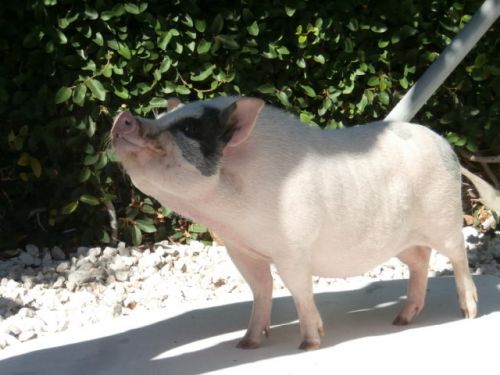"To my mind, the life of a lamb is no less precious than that of a human being. I should be unwilling to take the life of a lamb for the sake of the human body." This famous and extremely respected quote by Mahatma Gandhi reveals his compassion for the innocent lives of animals.
Animals suffer because of human need, greed, consumption, and cruelty. Sadly, many are used, abused, tortured and killed for the sake of many unnecessary human products including cosmetics, furs, and handbags. The amount of companies that still use animals for experimentation and lab research are astounding. And for what purposes? Many times creatures are put through torturous experiments that contribute no relevant findings, and in turn benefit no one. Many animals die for absolutely no scientific results what-so-ever.
The group, In Defense of Animals, has a fact list of many sick treatments lab animals have to endure. These experiments include, ". . .the Draize test, caustic substances are placed in the eyes of conscious rabbits. . . it is extremely painful for the rabbits, who often scream when the substances are applied and sometimes break their necks or backs trying to escape. . ." Other tests include lethal doses of poison being forced through stomach tubes into innocent animals. Doses are administered until half of the study group of animals die. Many of the lab animals endure vomiting, paralysis, seizures, and bleeding through eyes, nose, mouth and/or rectum. These practices are inhumane, cruel and simply evil. The In Defense of Animals group has a link to humane companies that do not kill innocent beings.
Alex, the author on vidacompassion.org has a list of companies that use animals in experimentation, animals for fur, or companies that may be questionable. She has done a great job updating the list and keeping it current over the last ten years. Alex also has links to animal friendly companies, consumer tips, animal advocate resources and much more. She should be praised for her realistic viewpoint regarding the halt of animal testing. Although as animal advocates, we would love to see an end to the unnecessary torture and killing of innocent animals, Alex announces that realistically companies that commit these acts are money making businesses. They each have multitudes of fans, followers, and eager spending consumers. Her solution which I agree with, is to do what we can as animal advocates and not support inhumane or cruel laboratory/experimentation practices. It is encouraged as Alex says, to not spend on money on their products and to spread the word to others as well.
With advanced technology there is no reason for innocent animals to live short lives in small laboratory prison cages. There are many successful companies that have humane practices in effect for testing their products appropriately, where animals are not exposed to the cruelty of a hellish lab. This is an animal friendly company list that anyone can be proud to be a consumer of.
WARNING: The following video is graphic in nature and may be disturbing to viewers, but reveals the truth of what is happening to innocent animals in labs.
"Not to hurt our humble brethren (the animals) is our first duty to them, but to stop there is not enough. We have a higher mission--to be of service to them whenever they require it... If you have men who will exclude any of God's creatures from the shelter of compassion and pity, you will have men who will deal likewise with their fellow men."
--Saint Francis of Assisi (mystic and preacher)
--Saint Francis of Assisi (mystic and preacher)
MAKE UP


